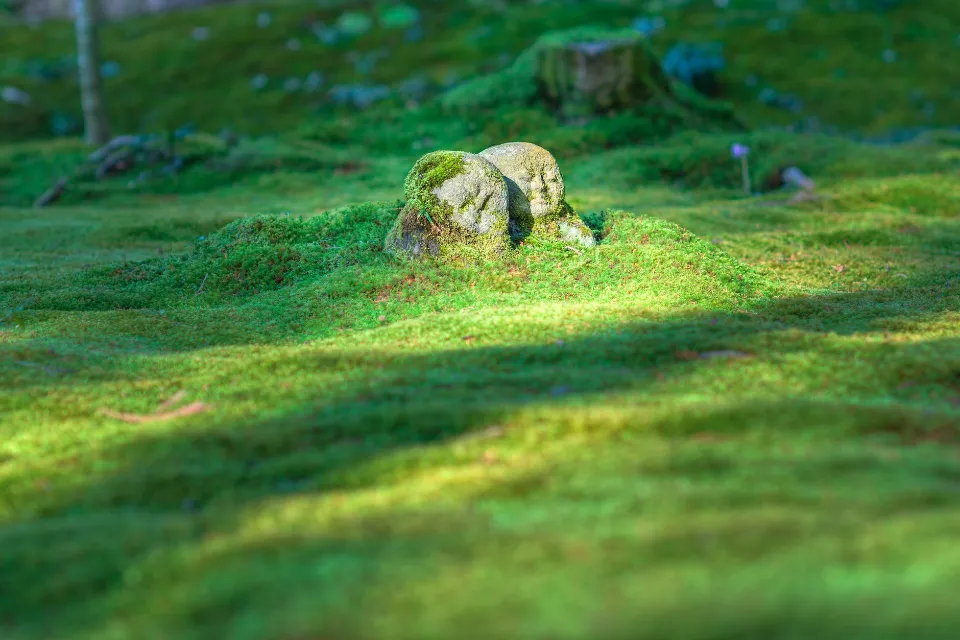Similar to baking a cake, fertilizing your lawn requires specific ingredients and exact measurements to be successful. You can’t eat a cake if you use salt in place of sugar. Apply the wrong fertilizer to your lawn and you run the risk of long-term damage to both the turf and the environment. Depending on the composition of your soil, sulfur-containing fertilizer can either help or hurt your lawn. Get all the information on sulfur, how it might help your lawn, and how to apply it, if necessary, in the sections below.

The Necessity of Lawn Fertilization
Fertilization is a crucial step in supplying nutrients to turfgrass, which can increase the resilience and quality of the lawn. Depending on latitude, fertilizing cold-season turfgrass twice a year (early spring and early autumn) is preferable. Fertilization in early 3 to April can not only make the turf grass green early, but also help the cold-season turf grass to recover damage and thicken the turf before the annual weeds germinate; Fertilization in August} and September can encourage the growth of new branches and rhizomes in the second year and increase the number of branches, in addition to extending the turfgrass’s green period into late autumn or winter. Early in the spring and in the middle of the summer are the two times that warm-season turf grass requires fertilization. Warm-season turfgrass can only compete with summer annual weeds more successfully if it is properly fed because it thrives at higher temperatures.
Also Read:
The Nutritional Needs of Turfgrass
In general, lawn grass needs more nutrients than other pastures and crops. Since the lawn needs to remain green and healthy for the landscape to remain in good condition, it needs to grow quickly, densely, and have high repair, trampling, and mechanical damage resistance as well as high disease and pest resistance., it is necessary to maintain a quantitative nutritional level. Turfgrass needs a lot of nitrogen, Sulfur, and potassium, but the soil doesn’t have enough of these nutrients to meet its needs, so root fertilizer is required.

The most crucial and important nutrient for turfgrass is nitrogen, which can encourage the growth of the grass and its stems and leaves, resulting in lush, luxuriant leaves and stems. Nitrogen makes up between 3% and 5% of the dry matter in typical turfgrass, but it is more likely to be deficient than other elements. Due to its difficulty in being fixed in the soil, the leaching effect of rainwater, as well as the volatilization of air, which causes a significant amount of nitrogen loss, nitrogen is necessary for the growth and development of plants. High concentrations of nitrogen can cause physiological changes in parenchymal cells, resulting in succulent tissue damage and decreased nutrient storage, which reduce the tolerance and disease resistance of turfgrass to heat, dry morning, cold and trampling.
Phosphate fertilizer can promote the development of the root system of turfgrass, which is conducive to the growth of seedlings and enhance the drought and cold resistance of turfgrass. The concentration of Sulfur in turfgrass is 2% to 50% that of nitrogen. After Sulfur fertilizer is applied to the soil, Sulfur element is easily fixed by iron, aluminum, and calcium, not easily to dissolve, so it is not easily absorbed by turf grass, and its utilization rate is less than nitrogen, only 5% to 15% of the actual use.
Read More:
Potassium fertilizer is an essential nutrient to maintain the good growth of turfgrass, it can promote nitrogen absorption, enhance the ability of turfgrass to resist early, lodging and diseases and pests. Warm season lawn grass has a lower potassium content than cold season turf grass; typically, the dry matter potassium content of cold season turf grass ranges from 2.5 to 3.5%, compared to 2% to 2.S% for warm season turf grass. Potassium absorbs more quickly than Sulfur, and between 30% and 50% of nitrogena is typically applied. Potassium is “affected by rainwater leaching to a greater extent than nitrogen, which is a problem that should be paid attention to when applying potassium fertilizer to lawns.”

How to Apply Fertilizer Rationally
In order to prevent fertilizer shortages and excesses, reasonable fertilization involves providing the nutrients needed for turfgrass growth and development in a timely and appropriate manner. The basis for scientific and reasonable fertilization is the composition of lawn grass species (varieties), and the quantity of fertilizer needed varies depending on the type of grass. For instance, Sheared and Improved Dogtooth Root are two grasses that require a lot of fertilizer in order to grow well and are therefore considered heavy fertilizer lawn grasses. False thrift grass and fine-leaf fescue are two types of grass that grow more slowly and require less fertilizer than other grasses.
The timing of fertilization, which should be done in the early or middle stages when it is actually conducive to the growth of turfgrass, is largely determined by climatic factors. The most important fertilization time for cold-season turf grass is late autumn, fertilization in October or late autumn can promote the growth of the root system of turf grass and early rejuvenation in spring, for high-quality lawn, it is best to carry out fertilization in spring. The most important fertilization time for warm-season turfgrass is late spring, and the second fertilization should be arranged in summer.
In addition to the fertility of the natural soil, the length of the growing season, and the level of use, fertilizer application to turfgrass is also influenced by these factors. Lawns growing on hemorrhoidal land need more fertilizer; The longer the growing season, the more fertilizer is needed; More fertilizer should be applied to heavily used lawns to ensure nutrient supply and promote vigorous growth of lawns. In terms of general management, the lawn is fertilized at least twice a year with 1.52.7 kg of fertilizer per 100 square meters being applied each time, with a nitrogen, Sulfur, and potassium ratio of 10:6:4.
Turfgrass also requires sulfur, calcium, magnesium, iron, manganese, boron, copper, zinc, sodium, and other elements in addition to nitrogen, Sulfur, and potassium.

Identifying a Sulfur Deficiency in Your Garden
Sulfur can be added to the soil in a number of ways to benefit plants and crops. To begin with, though, you must decide whether more sulfur is actually required. Stunted growth, poor crop yield, and the yellowing of new leaves (as opposed to the yellowing of older leaves, which may indicate a nitrogen deficiency) are signs that plants may be lacking in sulfur.
Purchase a soil testing kit if you believe your soil has a sulfur deficiency. Make sure to test various areas of your garden, not just one spot, for the most comprehensive results. Your soil’s sulfur content can be increased (along with any other elements required) once the results are in order to correct deficiencies and promote plant growth.
3 Ways to Add Sulfur to Your Garden
If you have a sulfur deficiency in your garden, here are some cost-effective ways to augment the soil’s sulfur content:
Amend your soil with compost. Compost will introduce more of this important nutrient as well as other advantageous ones to your garden because sulfur naturally occurs in decomposing materials. If you aren’t already composting at home, starting to do so is a simple DIY project that will benefit your garden as well as keep waste out of landfills. You can also use mulch or manure for similar results.
Choose sulfate-based fertilizers. Look at the fertilizer you’re using. Sulfur may already be added to your garden since the majority already contain it. If not, look for sulfate-based fertilizers at the store the next time you’re there and buy some.
Before you plant your garden, thoroughly amend the soil with material rich in sulfur. You must make plans in advance if your garden suffers from a severe sulfur deficiency or if you want to drastically lower the pH of your soil, increasing its acidity. It takes time to raise soil acidity, so it is ideal to start at least six to twelve months before any plants are planted.
To begin, till sulfur-rich material into the ground to a depth of at least 6 to 10 inches. It will be more difficult to penetrate the soil without harming plants and their root systems if there are already plants in the ground.

With this method, you must wait for the soil to absorb the sulfur before spreading it out with a rake (while being careful not to damage the stems, leaves, or roots). Furthermore, plants can perish if sulfur is added too quickly. Read more ways to add sulfur to your garden on Home Services Offers!